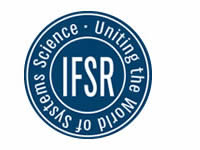IFSR Newsletter 1994 Vol. 13 no. 3 (34-35) December
Prof. Dr. Helmut Pfutzner
Technical University of Vienna
GuBhausstr. 27
A-1040 Wien, Austria
Bioelectricity/Biomagnetics (BE&M) is the science of the electric and/or magnetic behavior of biological systems. Biophysical methods are applied to determine the reactions of biological molecules, cells, tissues and organisms to electromagnetic fields, and also to study synaptic transmissions, for example between nerves and muscle cells.
Industry is willing to fund basic research in BE&M because results can, thanks to modern sensor, automating and computer technologies, be practically applied. We first study the electromagnetic behavior of biological systems, then we find direct applications. for our results in biology, medicine or related fields. The engineering work, the design of the sensors, the electronics and the software, is done in close cooperation with industry.
In BE & M one has to deal with inaccuracy. Biological systems elude exact description, and their physical properties are expressed in terms of orders of magnitude. Sensors should be sensitive, but they don’t have to be precise. The modeling of field structures may be based on finite elements of rough design. For evaluation of data new technologies such as imprecise neural networks have proven invaluable. Our work concentrates on three levels of biological systems: microorganism, cell and tissue level and organism level.
The level of microorganisms
When an electric or magnetic field is applied to microorganisms in a liquid culture, it is distorted or weakened by that culture. A strong field may manipulate small living cells, or even kill them. These phenomena are the points of departure for various practical applications of fields to determine the number of bacteria or yeast cells in a sample of chocolate, beer or stored human blood. We have also evaluated the characteristics of electrodes which are specifically affected when inserted into samples. The results were used to develop a bacteria tracer; ‘It is proving successful on the world market. Since the biological and electrochemical mechanisms involved are highly complex and only incompletely understood, neural networks are employed for data evaluation.
As has been known for centuries, a metal electrode may have bactericidal effects when it is inserted into a contaminated liquid. One project is to make use of this phenomenon to develop fully automated equipment for water conditioning. We thereby utilize both the feedback from the sensors, which indicates the degree of contamination as well as the ionic composition of the water, and the modem technology of metal composition.
Finally, we use fields to manipulate microorganisms. Electric fields bring about local concentrations of cells; they even make those cells fuse together, which of course involves a transfer of genetic material. With magnetic fields we can guide magnetotactic bacteria; that makes it possible to visualize microfield configurations. Besides, we are trying to make cells guidable with magnetic antibody complexes or by fusing them with magnetotactic cells.
The cells and tissue level
Such field modifications in the presence of biological material offer alluring prospects for the specific detection and/or characterization of such substances. Measuring devices do not have to come into direct contact with them. Apart from costly resonance techniques such as NMR, however, practical applications are complicated by the low magnetic moment of biological matter. Nevertheless, the characterization of human blood on the basis of this property is feasible because of the specific moment of hemoglobin. Utilizing electric fields, one can more easily analyze blood and determine the hematocrit (the volume of red blood cells which was packed by centrifugation in a given volume of blood) and the cell size. These measurements can be made because the nanometer-thick cell
membrane acts as an electrical capacitor which responds in a very sensitive manner to membrane detects, thus enabling us to readily detect damage to stored blood.
We use the same principle to detect muscle cell membrane defects; these serve as an indicator of the tissue damage which occurs during the amputation of extremities. We also apply it to food technology; a simple apparatus enables us to determine whether liver is fresh or deep-frozen and to recognize pale, soft and exudative (PSE) muscles in pork.
The organism level
The various tissues and organs of which the human body consists display significantly different electrical characteristics because of the divergent electrical properties of their membranes. One focus of attention is the human skin. It is a multi-layered system with densely-arranged cells and channels. The latter are filled with sweat, an excellent conductor, during phases of physiological excitement. We have developed a computerized sensor system which can locally determine the humidity, temperature and electrical conductivity of the skin. It has applications in many fields, including physiology, tumor detection and cosmetics.
A second focal point is the heart/lung system. First an electrophysiological model of the human thorax is made, based on dielectric lab analyses of the tissues located in it (heart muscle, blood, lung, surrounding muscle and fat, etc.). Then the electrical responses to various physiological activities are predicted; the values obtained serve as a basis for monitoring methods. One approach is to transmit a high-frequency electric field and to evaluate the signals then detected on the skin. Magnetomechanical sensors are also attached to the skin to gather information. This is then processed by hard- and software filtering. Neural networks are thereby utilized because they can cope with the complex, poorly understood interconnections. Currently a monitoring system of this type is being tested at various clinics; its applications include the diagnosis of lung defects after accidents and the monitoring of apnea (temporary cessation of breathing), both in small children (associated with SlDS – sudden
infant death syndrome) and in adults. In the latter it is often associated with extremely loud snoring. Persons affected have a drastically reduced life expectancy.
